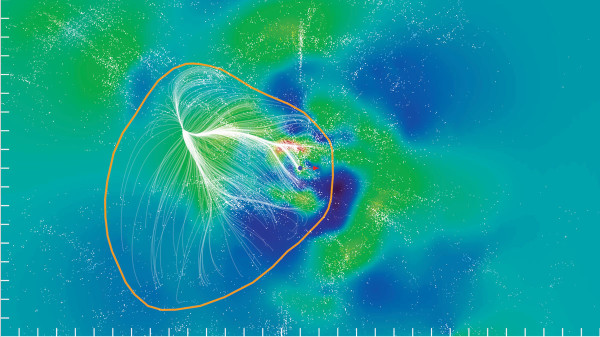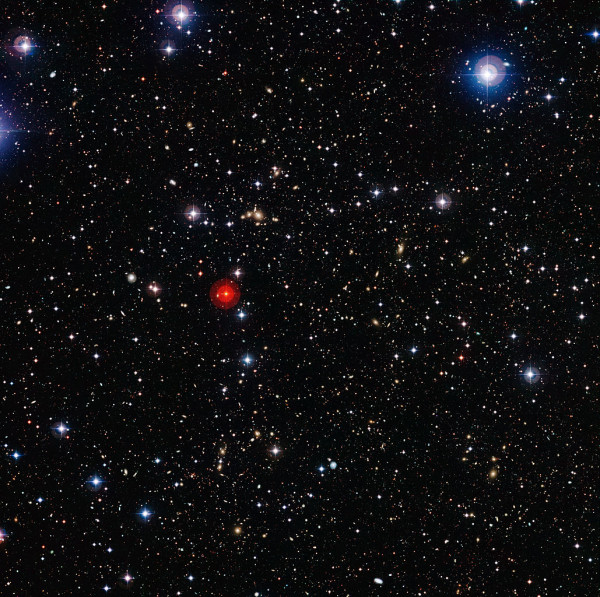“I was confided to your loyalty and accepted by your treason; you offer my death to those to whom you had promised my life. Do you know who it is you are destroying here? It is yourself.” -Victor Hugo
So those of you who've been paying attention may have just heard that we've mapped out our supercluster of galaxies -- Laniakea -- to unprecedented accuracy, identifying a region 500 million light-years in diameter that's responsible for our local group's motion through space.
 Image credit: R. Brent Tully (U. Hawaii) et al., SDvision, DP, CEA/Saclay, of Laniakea, our local “supercluster” of galaxies.
Image credit: R. Brent Tully (U. Hawaii) et al., SDvision, DP, CEA/Saclay, of Laniakea, our local “supercluster” of galaxies.
This is an amazing feat of astronomical mapping and cluster identification, but calling a structure like this a "supercluster" implies that, in some way, the galaxies, galactic groups and galaxy clusters that make this up are in some way bound together.
 Image credit: the COMBO-17 Survey / ESO, via http://www.eso.org/public/images/potw1304a/.
Image credit: the COMBO-17 Survey / ESO, via http://www.eso.org/public/images/potw1304a/.
But this is in no way the case! Come find out why "superclusters" aren't so super after all.

@Ethan: I'm not sure I entirely agree with your broad statement here, "our best simulations of gravitation ... reproduce to arbitrary accuracy the Universe we actually observe ..." As I understand it, our best simulations, using the "nominal" LCDM parameters, do _not_ reproduce the Universe we actually observe, in two different ways.
1) On the scale of galaxy groups and clusters, the nominal parameters significantly overestimate the population of dwarf galaxies, in contradiction to observations of the Local Group (the only place where we're likely to see dwarfs, just from luminosity and resolution issues).
2) On the scale of individual galaxies, the nominal LCDM parameters predict a much higher "cusp" to the dark matter density than is observed from baryonic mass distributions and rotation curves.
I'm not arguing with the broad statement that LCDM does a much better job of reproducing observations, at all scales, than any other competing model. I just think that in your enthusiasm you've overstated the level of agreement.
At what point in the demolition of a building does it cease being a 'structure'?
Can we point at it's history of being a coherent entity, and call it a structure while it is in the process of being exploded? Same for the superclusters - their shared history rather than shared future is why they are named thus.
Under this logic, couldn't we say that what we call "galaxies" are also not really structures, since acceleration will eventually tear them apart as well?
I guess it's whether the aggregate exists long enough compared to the lifetime of the elements combined.
Our body outlives the cells comprising it, so it is definitely a thing.
I believe that dark energy were are looking for is space itself. Its mass less dark energy. If we can figure out what it is and how to use it there is plenty to power any spacecraft.